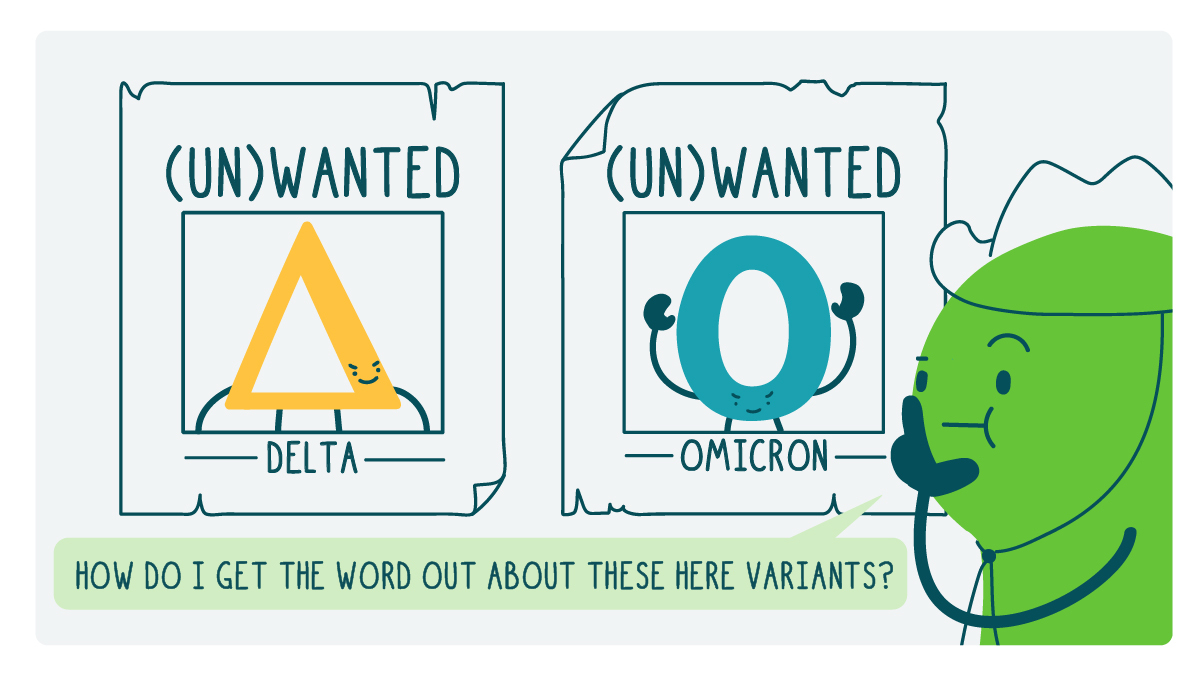
Here at We ❤️ Health Literacy Headquarters, we’ve been keeping a close eye on all things Omicron over the last few weeks. But it’s been tricky to get our audiences the information they need — especially at first, when there were so many questions we couldn’t answer.
And unfortunately, Omicron won’t be the last COVID variant to hit the pandemic scene. As health communicators, we’ll need to do our best to give our audiences clear information and actionable guidance for every variant — so they can make informed decisions about their health.
With that in mind, here are some key tips for communicating with your audiences about variants:
Be honest about what we don’t know. This tip may well turn out to be the MVP of health comm during the pandemic, and it’s super relevant when we’re communicating about variants. When a new variant emerges, we simply won’t have all the answers. Be up front about that with your audiences — and explain that scientists are learning as much as they can, as fast as they can. If we can avoid getting ahead of ourselves in regard to what we know, we can avoid making U-turns in health advice — and losing our audience’s trust in the process.
Reinforce proven prevention strategies. It’s frustrating when we can’t answer our audience’s timely questions about new variants (or anything else). But one thing you can do in these moments is focus on what we do know. So take the opportunity to encourage your audiences to wear masks in public places, keep their distance, and — of course — get vaccinated and boosted. Speaking of which…
Leverage the science of variants to support vaccine messaging. Explain that when COVID spreads from person to person over time, it can mutate into different versions of the virus. And since the available vaccines were designed specifically to protect against the original virus, they may be less effective at preventing infections from new variants.
We know this one’s a little fraught since we don’t want to undermine our messaging about vaccine efficacy. But the fact is that while vaccines are working less well at preventing Omicron entirely, they are keeping many (most?) people from getting very sick. So tell your audiences that the more people who get vaccinated and boosted, the better chance we’ll have at keeping new variants from showing up in the first place. And that’s a win for everyone.
Give people the tools they need to make informed decisions about socializing. Lots of people are wondering if it’s still okay to see others in person with Omicron in the mix. And the answer is… it depends on too many things for us to, well, answer! So help your audiences choose ways to socialize that they’re comfortable with — and offer talking points for discussing those choices with friends and family.
The bottom line: Omicron isn’t the last COVID variant we’ll have to reckon with. When new variants crop up, be honest about what we don’t know yet — and reinforce tried-and-true messages.
Browse recent posts